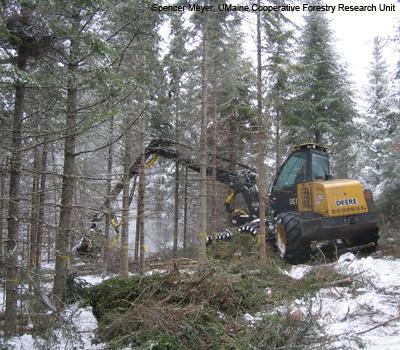Response of Tree Regeneration to Commercial Thinning in Spruce-Fir Forests of the Northeast

In the Northern Forest region, owners of spruce-fir forests interested in timber production are increasingly applying commercial thinning on their lands. Commercial thinning is traditionally used to enhance tree growth by reducing crowding, while harvesting merchantable trees for forest products. Enhanced growth of the remaining trees is driven by increases in the availability of resources, such as light, water, and nutrients, which may also stimulate establishment of new trees, or regeneration. Although triggering regeneration is not traditionally an objective of thinning, understanding what responses to anticipate can help forest managers plan for future operations that renew their forests after final harvest.
A decade after thinning in two long-term commercial thinning experiments in spruce-fir forests of Maine, NSRC researchers found abundance of desirable conifer regeneration was 10-times greater in thinned than in unthinned stands. Small conifer abundance was highest in lower intensity thinning treatments, while the abundances of larger conifer regeneration increased as thinning intensity increased. The abundances of hardwood tree regeneration also generally increased with thinning intensity. In addition to providing higher individual tree growth and merchantable yield, commercial thinning in northeastern spruce-fir stands also increases regeneration abundance.
This response to commercial thinning has implications for the sustainability of managed northeastern spruce-fir, since commercial thinning may simultaneously improve tree growth and accumulate desirable conifer regeneration. In turn, this could shorten rotation length by reducing the time needed to develop acceptable regeneration abundance under more traditional methods for regenerating spruce-fir forests.
